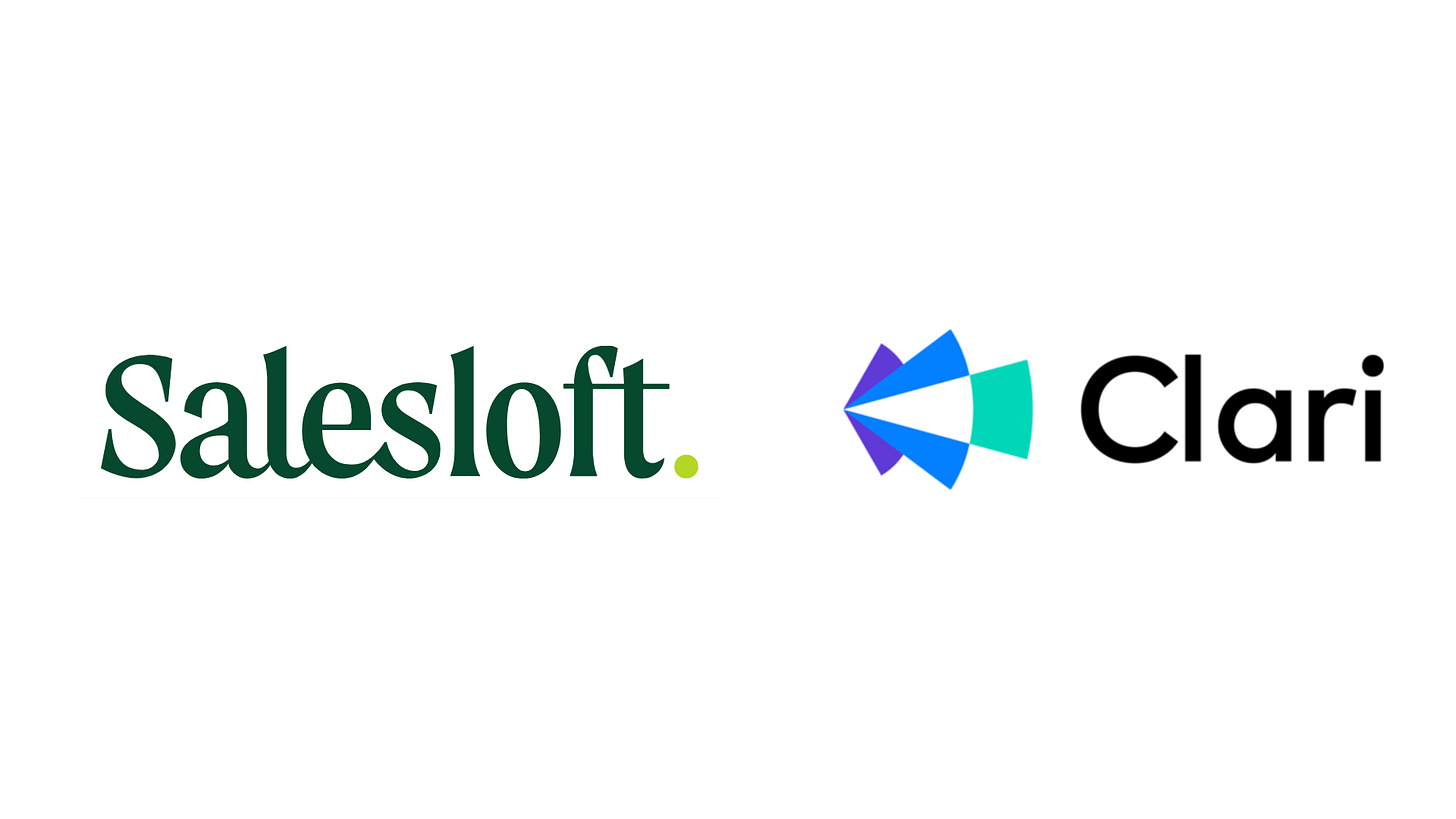The Clari-Salesloft merger represents one of the most significant salestech transactions in recent years, and an important milestone for revenue orchestration.
This combination creates a revenue orchestration powerhouse with 2,300 employees serving 5,000 customers. By my estimates, the merged entities generated over $450M in ARR last year. Their technology portfolio spans conversation intelligence, deal intelligence, revenue intelligence, and sales engagement. It is backed by 10 billion revenue actions and 1 trillion data signals ingested, one of the largest datasets in the industry. However, this investor-driven merger faces significant integration challenges, particularly given substantial technology overlap between Clari and Salesloft.
Revenue orchestration is an emerging category blending conversation intelligence, deal intelligence, revenue intelligence, and sales engagement. Forrester coined the term in 2024, signaling its belief that the category would become a cornerstone of salestech consolidation by dedicating a Wave to it. Gartner echoed this trend with a similar label—Revenue Action Orchestration—though it has yet to release a Magic Quadrant or Market Guide.
Revenue orchestration is propelled by two forces. First, businesses want to simplify and streamline bloated salestech stacks. Second, alpha vendors—a term coined by Craig Rosenberg in 2022 for well-funded startups aggressively expanding beyond their original mini-categories—are driving consolidation.
The funding numbers make the latter imperative clear: Clari ($496M raised, $2.6B valuation), Gong ($584M raised, $7.25B valuation), and Outreach ($489M raised, $4.4B valuation) all need to create a market large enough to sustain their growth ambitions. While PE-owned, Salesloft faced similar pressure after Vista’s $2.3B majority acquisition in 2022, later merging with Drift, which Vista had acquired in 2021 for $1B.
Despite these forces, revenue orchestration has grown more slowly than expected.
The push to consolidate sales stacks has been talked about for years, but has remained a moving target. It mostly applies to tech companies with extensive salestech investments. Other industries are still in the early stages of adopting modern salestech technologies, and prefer to proceed one bite at a time.
In tech, consolidation has largely meant cutting software that didn’t directly impact revenue operations or consolidating vendors within the same category. Only in 2024 have we seen true consolidation projects emerge—like Reddit using Gong as the backbone of its sales transformation, SAP adopting Outreach across its various revenue workflows, or IBM expanding its deployment of Salesloft to its global sales organization.
The three largest players in the category—Gong, Outreach, and Salesloft—each hit a growth plateau around $300M ARR last year. While growth has resumed, the overall category lacks the tailwind needed to meet their ambitious targets.
Another challenge of the category is that only a handful of players—Aviso, Clari, Gong, Outreach, Revenue Grid, Revenue.io, and Salesloft—have assembled a suite covering its full gamut. CRM players—HubSpot, Microsoft, SAP, and Salesforce—have steadily added the capabilities needed to compete in the category. However, except for HubSpot, adoption of their integrated suites remains limited, primarily due to implementation complexity.
Could this merger be a catalyst to re-energize the category? I believe the real opportunity isn’t just consolidating salestech stacks in the tech sector but expanding into other industries. Together, Clari and Salesloft have the scale to pursue salestech’s next growth frontier.



